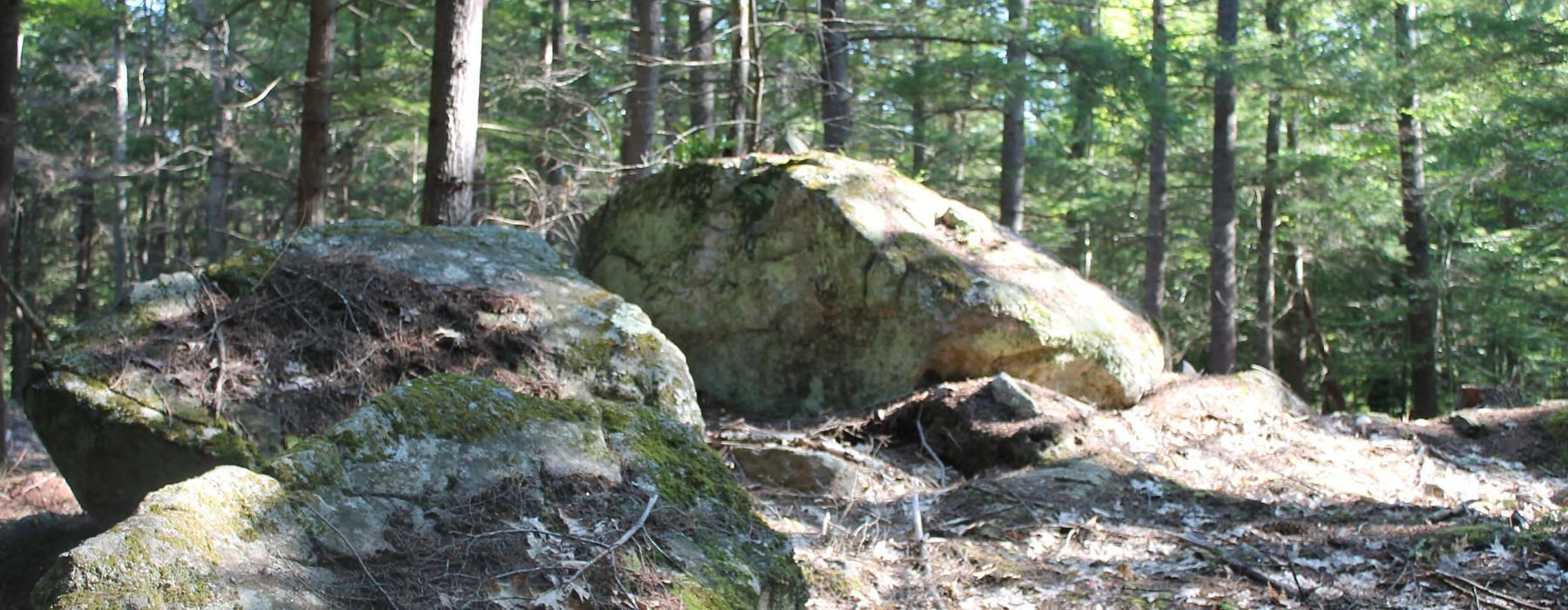
Rocks
The rocks of Graylag have a fascinating story to tell as silent witnesses of events whose scale in space and in time can scarcely be imagined. Viewed in the light of basic geological background information, they become virtual pages in a textbook of geological events and processes over a vast span of time.
At each of Graylag’s exposed bedrock ledges the effects of Pleistocene or “Ice Age” glaciation are clearly evident, with major rock surfaces having been smoothed almost to a polished state by the “sandpapering” action of debris embedded in the ice. Many of these surfaces also show gouges or striations produced by larger pebbles frozen into the icy glacial mass. These striations are all oriented parallel to the direction of the ice movement, which was generally from northeast to southwest.
Some geological features that may be of interest to visitors include:
Veins of quartz: seen in many of the bedrock outcrops at Graylag.
Schistosity or foliation: a feature characteristic of schist, the predominant bedrock type at Graylag.
Pegmatite: an unusally coarse-grained form of granite in which large individual crystals or grains of common (and sometimes uncommon) minerals prevail.
Glacial smoothing and glacial striations: see in a number of outcrops along the drive.
Drag folds: a miniature form of great mountain-building folds of distorted bedrock layers that are produced under great heat and pressure deep within the earth.
The text above is excerpted from a report prepared in September 2019 by Ron Kley, of Museum Research Associates.
